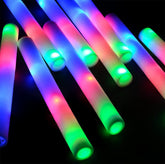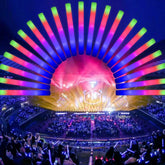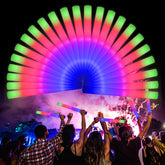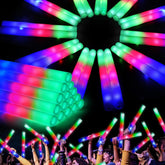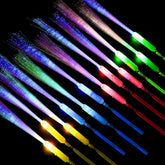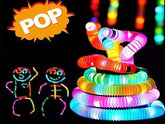Glow Sticks and the Environment: Choose environmentally friendly glow sticks
What are the 3 chemicals in glow sticks?
Before we explore the environmental impact of glow sticks, let's first understand their chemical composition. A glow stick contains three key chemicals: Diphenyl oxalate, Hydrogen peroxide, and Fluorescent dye.
Diphenyl Oxalate:
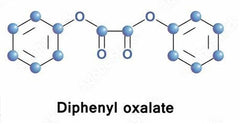
Function: Acts as an activator in the glow stick, creating light through a chemical reaction with the fluorescent dye.
Potential Environmental Impact: Diphenyl oxalate itself may not pose a direct threat to the environment. However, its manufacturing and release processes could potentially impact the environment through energy consumption and wastewater discharge.
Hydrogen Peroxide:

Function: Acts as a trigger in the glow stick, initiating the luminescent reaction with the fluorescent dye.
Potential Environmental Impact: In substantial usage, hydrogen peroxide might have certain effects on water bodies and soil. Excessive emissions could affect aquatic life and vegetation.
Fluorescent Dye:

Function: Imparts specific color and luminescent effects to the glow stick.
Potential Environmental Impact: The fluorescent dye may contain some organic compounds. Although the quantities are small, improper disposal and overuse can potentially pollute water bodies and soil.
While the chemical composition of glow sticks may have a certain impact on the environment, it is generally relatively minor. However, under large-scale usage and improper handling, these impacts can accumulate and have adverse effects on the surrounding environment. Therefore, it's essential to consider appropriate use and disposal of glow sticks to mitigate their potential environmental impact.
Do glow sticks biodegrade?
A crucial aspect to consider regarding the environmental impact of glow sticks is their biodegradability. Unfortunately, due to their synthetic chemical composition, glow sticks are not biodegradable. This raises concerns about their long-term impact on the environment.
Glow sticks can indeed have a certain impact on the environment. The manufacturing of glow sticks involves the consumption of non-renewable resources and energy. Additionally, the release of chemicals during usage can potentially pollute soil and water bodies. Disposable glow sticks contribute to waste generation, especially due to the non-biodegradable nature of their plastic components, potentially causing long-term effects on the natural environment. Furthermore, the manufacturing, transportation, and disposal of glow sticks result in energy consumption and carbon dioxide emissions. All these factors highlight the importance of appropriate handling and advocating for environmentally friendly alternatives to glow sticks.

Recycle Right, Keep it Bright: Protecting Our Environment!
How should glow sticks be disposed?
Commonly used glow sticks are chemical-based, and proper disposal after use is essential to minimize environmental impact. Here are some recommendations for handling used glow sticks responsibly:
-
Chemical Separation:
After using a glow stick, exercise caution to avoid cutting or breaking it, preventing contact with the internal chemicals. If a glow stick is damaged, wear protective gear, use a cloth to wipe any leaked liquid, place it in a sealed container to prevent further leakage, and consult the local waste management center. In case of a leak, wipe it with a cloth and place the waste in a double-layered plastic bag for disposal. Avoid haphazard disposal. -
Recycle or Dispose Properly:
Store intact glow sticks in a sealed bag or container to prevent further leakage. Subsequently, contact the local recycling center or specific waste management agencies to inquire about designated collection points or processing facilities for glow sticks. -
Consider Electronic Waste Recycling:
The chemical components in glow sticks categorize them as electronic waste. Therefore, you can search for local electronic waste recycling centers and submit the glow sticks to specialized facilities for electronic waste disposal. -
Seek Professional Advice:
If unsure about the local waste disposal procedures, seek guidance from local environmental organizations or waste management centers for professional advice and to learn the correct disposal methods. -
Avoid Direct Disposal:
Refrain from directly disposing of glow sticks into trash bins, rivers, lakes, or soil to prevent chemical contamination of the environment. -
Consider LED Foam Sticks:
Contemplate choosing LED foam sticks as an alternative. LED foam sticks, powered by batteries, are reusable, reducing environmental burden and minimizing waste generation.
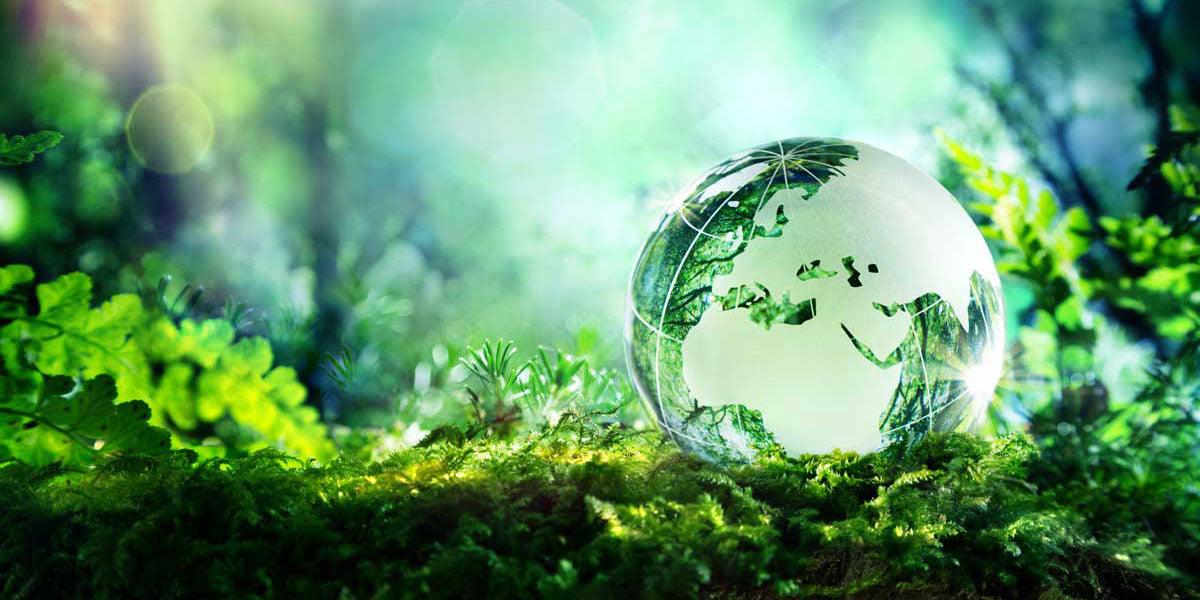
Protect Our Planet, Preserve Our Future
An environmentally friendly alternative to glow sticks
To address the environmental concerns associated with traditional glow sticks, an eco-friendly alternative is LED foam sticks. Unlike disposable glow sticks, LED foam sticks can be reused multiple times, reducing waste. Their long-lasting lifespan also helps in lowering resource consumption. LED foam sticks provide vibrant illumination similar to traditional glow sticks but without the harmful chemicals. By opting for LED foam sticks, we can enjoy the vibrant and exciting glow while actively contributing to a greener and more sustainable future.
Citation information: According to a report by the U.S. Department of Energy, LED light sticks are an efficient and environmentally friendly lighting alternative that can significantly reduce energy consumption and carbon emissions.
In conclusion, it’s crucial to be aware of the environmental impact of the products we use, even something as seemingly innocuous as a glow stick. By choosing LED glow sticks, we can still enjoy vibrant and exciting glow sticks while contributing to a greener and more sustainable future. Let's spread the message and encourage everyone to choose environmentally friendly LED light sticks and create a better, brighter, and sustainable world!
Learn More About LED Glow Stick
LED Light Sticks Are Reused to Get Maximum Fun at Minimum Cost

